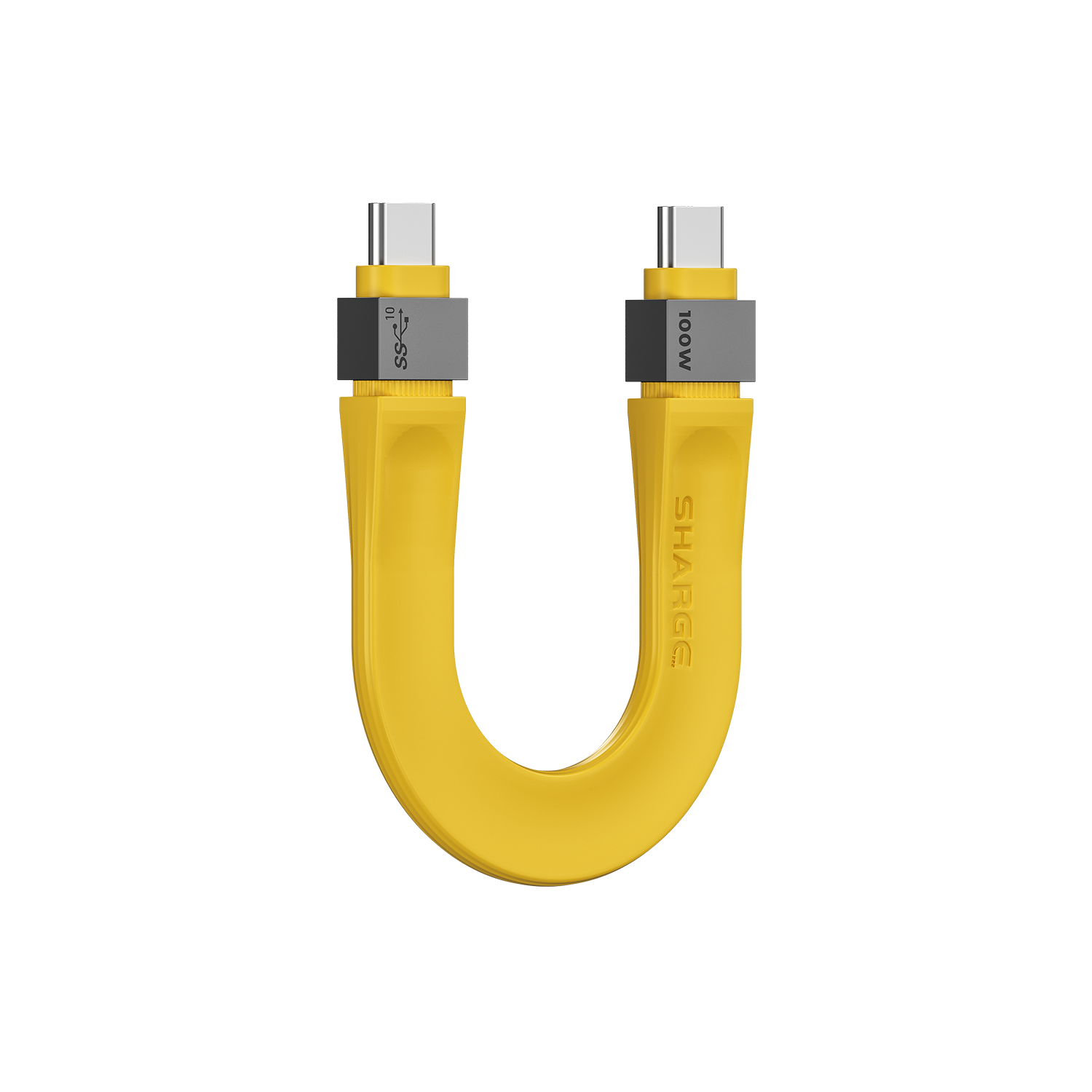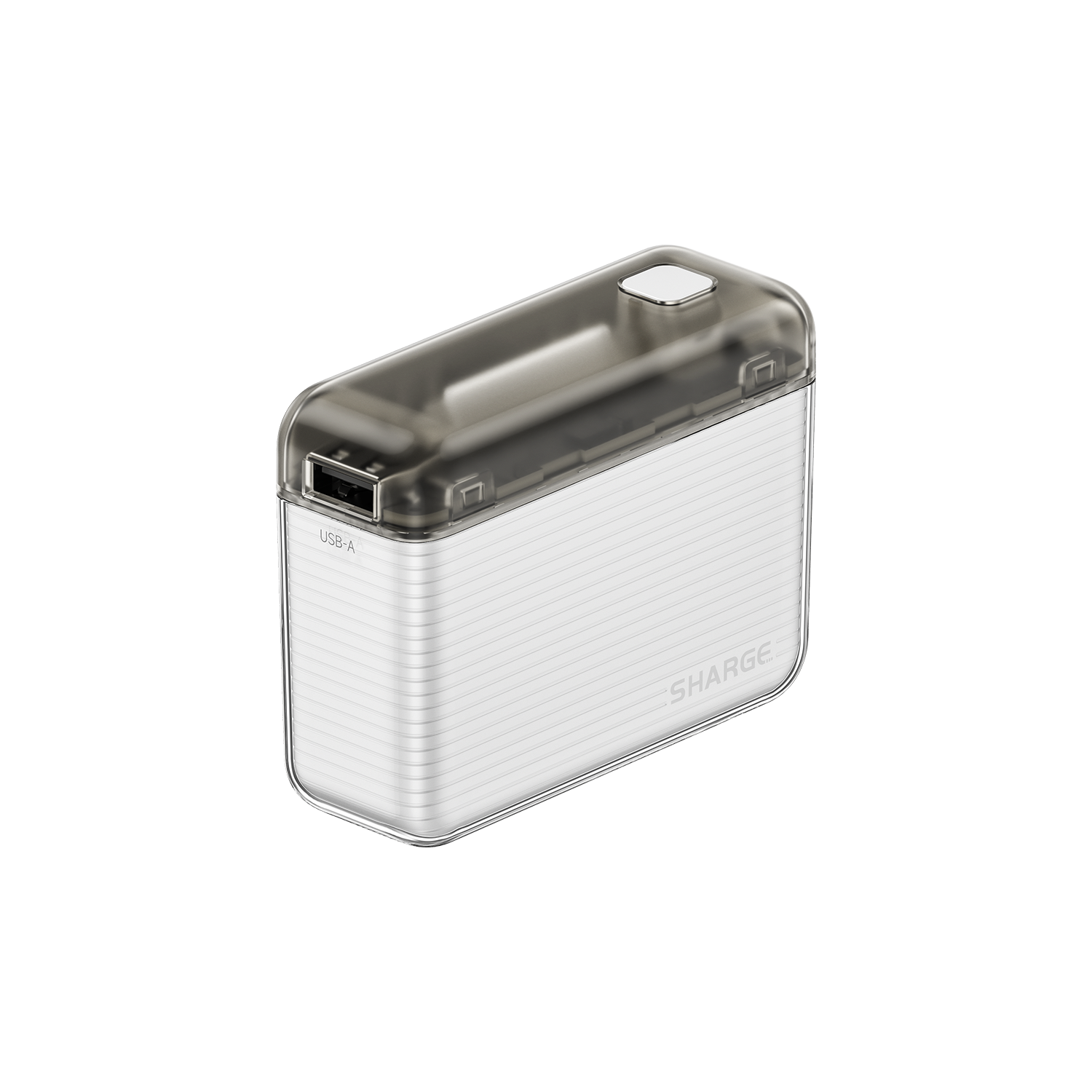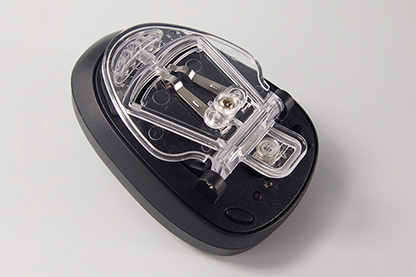Ladegeräte mit Basisanschluss
Integrierte Ladegeräte
Im Jahr 1992 stellte Nokia das weltweit erste kommerziell erhältliche Mobiltelefon vor – das Nokia 1011. Das nur 195 x 60 x 45 mm große Telefon war mit einem 900-mAh-Nickel-Cadmium-Akku ausgestattet, der 90 Minuten Gesprächszeit und 12 Stunden Standby-Zeit ermöglichte.
Das mit diesem Telefon gelieferte Ladegerät war zu dieser Zeit bereits ein üblicher Typ. Allerdings waren Ladekabel und Stecker unzertrennlich. War das Ladekabel beschädigt, musste das gesamte Ladegerät ausgetauscht werden. Es gab auch eine alternative Lösung in Form einer Akkuladestation, die es Benutzern ermöglichte, den Akku aufzuladen, indem er ihn in einen Ladeschacht steckte. Dies war eine gute Option, wenn Sie einen Ersatzakku hatten, aber damit konnten nur Akkus bestimmter Größen aufgeladen werden.
Universelle Ladegeräte
Im Jahr 2003, als die großen Mobiltelefonhersteller ihre Präsenz im 21. Jahrhundert schrittweise ausbauten, strömten aufgrund mangelnder Standardisierung eine Vielzahl von Mobiltelefonen mit unterschiedlichen Ladeschnittstellen auf den Markt. Um die Mobilität zu erleichtern und den Marktanforderungen gerecht zu werden, wurde das Universalladegerät geboren.
Abgeleitet vom oben genannten Dock-Ladegerät könnte es den Ladebedarf der meisten Telefone decken. Es verfügte über zwei verstellbare Kontaktfedern aus Metall und einen transparenten Clip zum sicheren Halten der fest eingebauten Batterie. Trotz seines scheinbar einfachen Designs wurde dieses Accessoire für Tausende von Mobiltelefonnutzern zu einem unverzichtbaren Gegenstand. Heute existiert es nur noch in den Erinnerungen der Menschen.
Separate Ladegeräte
Im Jahr 2007 revolutionierte Apple mit dem ersten iPhone den Markt für Ladegeräte im Zeitalter der integrierten Akkus. Die Einführung nicht entfernbarer Batterien führte direkt zu einem intensiven Wettbewerb in der Ladegerätebranche. Drehte sich der bisherige Wettbewerb auf dem Markt für mobiles Laden um Akkus, rückte die Ära der nicht entfernbaren Akkus Ladegeräte in den Bereich des Wettbewerbs. Das iPhone von Apple nutzte ein abnehmbares 5V1A-Direktladegerät. Im selben Jahr führten viele Länder Richtlinien zur Standardisierung der Ladegerätspezifikationen ein, wodurch Ladegeräte mit abnehmbaren Köpfen und Kabeln zum Mainstream auf dem Markt wurden.
Ebenfalls im Jahr 2007 wurde während der fünften Plenarsitzung der Studiengruppe (SG5) der International Telecommunication Union Telecommunication Standardization Sector (ITU-T) in Genf, Schweiz, die Einführung von Micro-USB als Standard für Ladegeräte für Mobiltelefone genehmigt. Dies bedeutete faktisch eine weltweite Standardisierung der Ladegerätschnittstellen für Mobiltelefone.
Schnellladegeräte
Im Jahr 2010 veröffentlichte das USB Implementers Forum (USB IF) offiziell das USB Battery Charging (BC) 1.2-Protokoll. Dies war ein Meilenstein, da der Ladestrom 1,5 A erreichte und eine Ladeleistung von 7,5 W erreicht wurde.
Im Jahr 2011 kam es mit der Veröffentlichung des Samsung Galaxy Note zu einer bahnbrechenden Änderung beim mitgelieferten Ladegerät. Erstmals wurde die Ausgangsspannung abweichend von der herkömmlichen 5V-Ausgangsspannung auf 5,3V eingestellt. Vielen Nutzern fiel schnell auf, dass die Ladegeschwindigkeit des Samsung Galaxy Note viel schneller war als bei anderen Handys mit 5-V-Ladegeräten. Von da an entstand das Konzept des „Schnellladens“.
Anschließend kamen verschiedene Mobiltelefonhersteller mit eigenen Schnellladegeräten auf den Markt. Sie übernahmen häufig die von USB-IF etablierten Power Delivery (PD)-Protokollstandards oder das Quick Charge (QC)-Protokoll von Qualcomm. Darüber hinaus haben viele Unternehmen ihre eigenen Schnellladeprotokolle entwickelt, wie unter anderem das FCP/SCP-Protokoll von Huawei, das AFC-Protokoll von Samsung und das VOOC/SuperVOOC-Protokoll von OPPO.
Drahtlose Ladegeräte
Die Geschichte der kabellosen Ladetechnologie reicht bis ins Jahr 1978 zurück, als der Amerikaner George Berkley den Präzedenzfall für das kabellose Laden von Elektrofahrzeugen schuf. 1994 gab das japanische Unternehmen Murata Manufacturing die Errungenschaft der „magnetischen Kopplungsresonanz“ bekannt. Im Jahr 2006 führte das Massachusetts Institute of Technology (MIT) in den USA erfolgreich ein 2-Meter-Übertragungsexperiment durch.
Derzeit gibt es vier ausgereifte drahtlose Ladetechnologien: elektromagnetische Induktion, elektromagnetische Resonanz, elektrische Feldkopplung und Radiowellenmethoden. Zwei weithin anerkannte Technologien für Produkte wie Smartphones sind elektromagnetische Induktion und elektromagnetische Resonanz. Rund um diese Technologien haben sich drei Allianzen für drahtloses Laden gebildet: Qi, A4WPP und PMA. Derzeit ist Qi das am weitesten verbreitete Protokoll im Kommunikationsbereich. Dieses Protokoll nutzt elektromagnetische Induktionstechnologie, um kabelloses Laden zu erreichen, unterstützt das Laden von Geräten mit niedriger und mittlerer Leistung und wird häufig in Smartphones, Smartwatches und anderen Geräten verwendet.
Das kabellose Laden hat sowohl deutliche Vor- als auch Nachteile, was zu unterschiedlichen Bewertungen im Markt führt. Zu den Nachteilen gehören eine langsame Ladegeschwindigkeit, eine geringe Umwandlungseffizienz und eine erhebliche Wärmeentwicklung. Der Komfort des kabellosen Ladens wird jedoch als wesentlicher Vorteil angesehen. Gerade wenn man mit einer Wireless-Charging-fähigen Powerbank unterwegs ist, reicht dieser eine Vorteil aus meiner Sicht völlig aus. Beim kabellosen Laden müssen Sie sich nicht mit zusätzlichen Kabeln herumschlagen – indem Sie das Telefon einfach mit der Induktionsspule der Powerbank in Kontakt bringen, wird der Ladevorgang gestartet.
SHARGE verfügt über einzigartige Innovationen in der kabellosen Ladetechnologie. Um das Problem der geringen Umwandlungseffizienz aufgrund von Erwärmung anzugehen, hat SHARGE die kabellose Lade-Powerbank ICEMAG mit einem aktiven Kühlventilator ausgestattet.
Galliumnitrid (GaN)-Ladegeräte
Mit der kontinuierlichen Weiterentwicklung der Technologie durchlaufen Ladegeräte eine neue Transformationsrunde, und das neue Halbleitermaterial Galliumnitrid (GaN) wird erstmals in Ladegeräten eingesetzt. GaN verfügt über eine starke Wärmeleitfähigkeit, hohe Temperaturbeständigkeit und ermöglicht die Verkleinerung von Ladegeräten. Während die Ladegeschwindigkeit erhöht wird, kommt es nicht so leicht zu einer Überhitzung, was eine gute Sicherheitsleistung gewährleistet. GaN-Ladegeräte, egal ob mit einem oder mehreren Ports, werden auf dem Markt gut angenommen.
Ladegeräte mit GaN-Technologie und dem USB-PD3.1-Standard können eine maximale Ausgangsleistung von bis zu 240 W erreichen. Mittlerweile sind Ladegeräte nicht mehr auf das Aufladen von Telefonen beschränkt; GaN-Ladegeräte können auch in Hochleistungs-Gaming-Laptops mit diskreter Grafik, Power over Ethernet (POE) im Sicherheitsbereich, Elektrofahrrädern, IoT-Geräten und anderen Bereichen eingesetzt werden.
Das SHARGE 140-W-Ladegerät nutzt den PD3.1-Standard und die GaN-Technologie und unterstützt eine maximale Leistung von 140 W. Im Vergleich zu herkömmlichen Ladegeräten ist es deutlich kleiner und bietet gleichzeitig eine stabile Leistung.
Die SHARGE Retro 35 und Retro 67, zwei tragbare Ladegeräte mit Macintosh-inspiriertem Design, nutzen GaN-Technologie. Sie erreichen ein optimales Gleichgewicht zwischen Größe und Ausgangsleistung und integrieren kreative Funktionen wie beleuchtete Bildschirme, was sie zur besten Wahl für den täglichen Gebrauch macht.




SHARGEs beste Powerbank des Jahres 2024
SHARGE debütiert auf der CES 2024, dem weltweit größten Tech-Event